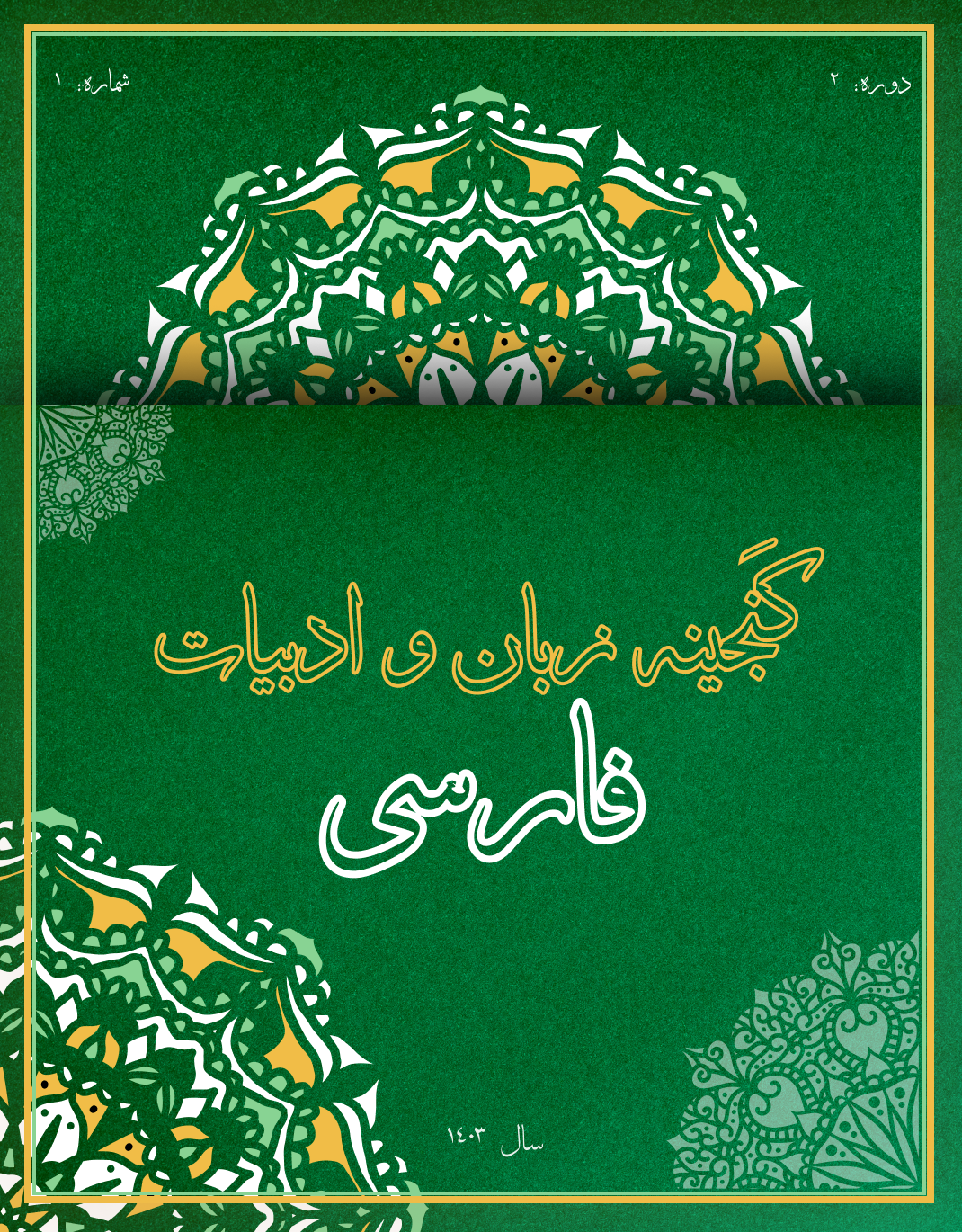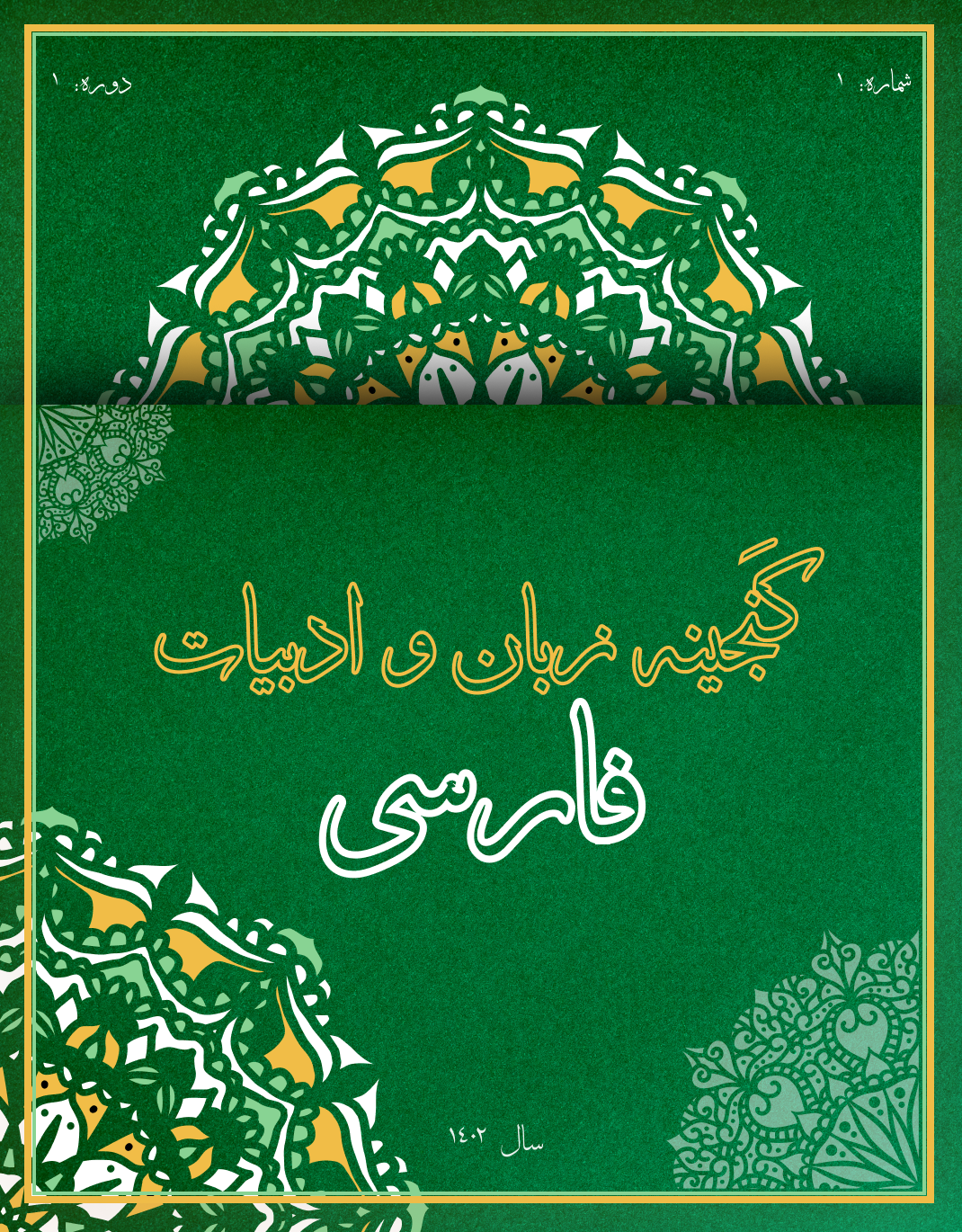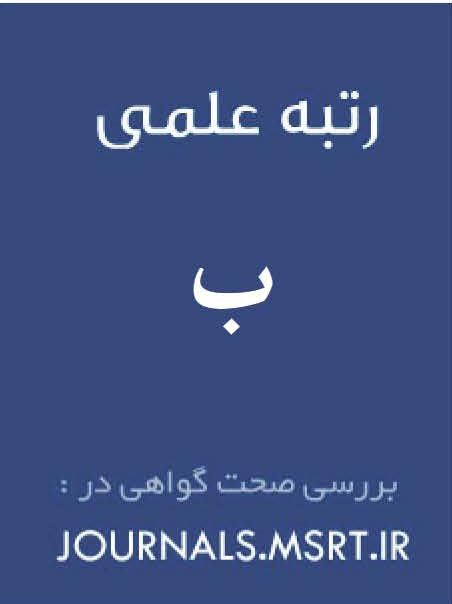Analyzing Conceptual Metaphors in Layla and Majnun in the Domains of “Actions” and “Objects” Based on the Conceptual Blending Theory
Keywords:
Metaphor, verbs, objects, Mathnawi, Layla and Majnun, conceptual mixtureAbstract
Metaphor has been studied from various perspectives including literary, linguistic, aesthetic, and psychological, and has been the subject of extensive research over centuries. In this regard, the Conceptual Metaphor Theory is one of the frameworks offering a novel perspective on metaphor, developed by Fauconnier and Turner (1998–2002) in the form of different mental spaces, including two input spaces, a generic space, and a blended space. The aim of this study is to analyze conceptual metaphors in Layla and Majnun in the domains of “actions” and “objects” based on the Conceptual Blending Theory proposed by Fauconnier and Turner (1998–2002). In this study, the mental spaces of each metaphor are examined to identify which conceptual domains are utilized in the construction of mental spaces in each metaphor. Subsequently, the meaningfulness or lack thereof of these conceptual domains is analyzed using SPSS. The results indicate that the domains used in the metaphors of Layla and Majnun can be categorized into two groups: “actions” and “objects.” In constructing the metaphors, these conceptual domains are placed within an input space and, together with another input space representing the poet’s intention, are projected into a blended space that gives rise to the metaphor. As the findings of this study reveal, all metaphors in Layla and Majnun can be analyzed based on the conceptual domains that contribute to the formation of mental spaces within the framework of the Conceptual Blending Theory.
Downloads
References
1. Sasani F. Metaphor as the basis of thought and creativity: Tehran: Sooreh Mehr Publishing; 2011.
2. Kovecses Z, Pourabrahimi S. An applied introduction to metaphor: Tehran: Organization for the Study and Compilation of Humanities Books; 2014.
3. Afarashi A, Mohaammad Mahdi Moghimi Z. Conceptual metaphors in the domain of shame based on evidence from classical Persian poetry. Linguistics Journal. 2014;5(2):1-20.
4. Lakoff G, Johnson M. Metaphors We Live By: Chicago: Chicago University Press; 1980.
5. Reinhart T. On understanding poetic metaphor. Poetics. 1976;5(4):383-402.
6. Chomsky N. Aspects of The Theory of Syntax: Cambridge: MIT Press; 1964.
7. Ziff P. On Understanding Understanding: Michigan: Cornell University Press; 1964.
8. Khademzadeh V, Saidi Mehr M. Conceptual metaphors of causality in Lakoff's perspective. Humanities Research Journal. 2014;1(71):7-33.
9. Richards IA. The Philosophy of Rhetoric: London: Oxford University Press; 1936.
10. Black M. More about Metaphors: Cambridge: University Press; 1979.
11. Grice HP. Logic and conversation: New York: Academic Press; 1975. 41-8 p.
12. Searle J. Expression and Meaning: Studies in the Theory of Speech Acts: Cambridge: University Press; 1979.
13. Lakoff G. Metaphors and War: The Metaphor System Used to Justify the War in the Gulf: Amsterdam: John Benjamins; 1992. 463-82 p.
14. Fauconnier G, Turner M. Conceptual Integration Networks. Cognitive Science. 1998;22(2):133-87.
15. Fauconnier G, Turner M. The way we think: conceptual blending and the mind's hidden complexities: New York: Basic Books; 2002.
16. Grady J, Oakly T, Coulson S. Blending and Metaphor: Philadelphia: John Benjamins; 1999. 421-38 p.
17. Khalifehloo SF, Mojahadi Razavian S. An analysis of the representation of conceptual metaphors in the story of "Siavash" from the Shahnameh of Ferdowsi: A cognitive approach. Literary Text Studies. 2022;26(92):313-37.
18. Dahmarde S. An analysis of the metaphors in Saadi's Gulistan based on the conceptual blending theory: (Master's thesis, University of Sistan and Baluchestan, Faculty of Literature and Humanities); 2019.
19. Urios-Aparisi E. Metaphor emergence in cinematic discourse2020. 97-118 p.
20. Ansah GN. The cultural Basis of Emotions Conceptual metaphors: The case of English, Lancaster, Lancaster and Alkan in Linguistics and Conference in University Teaching Language; 2010.









